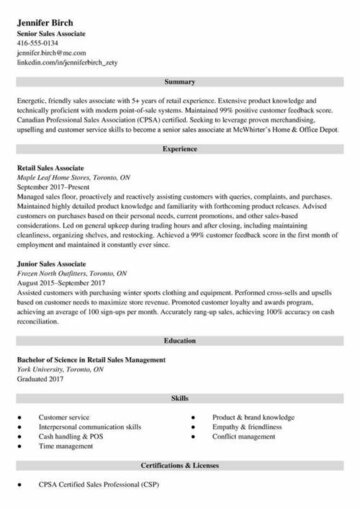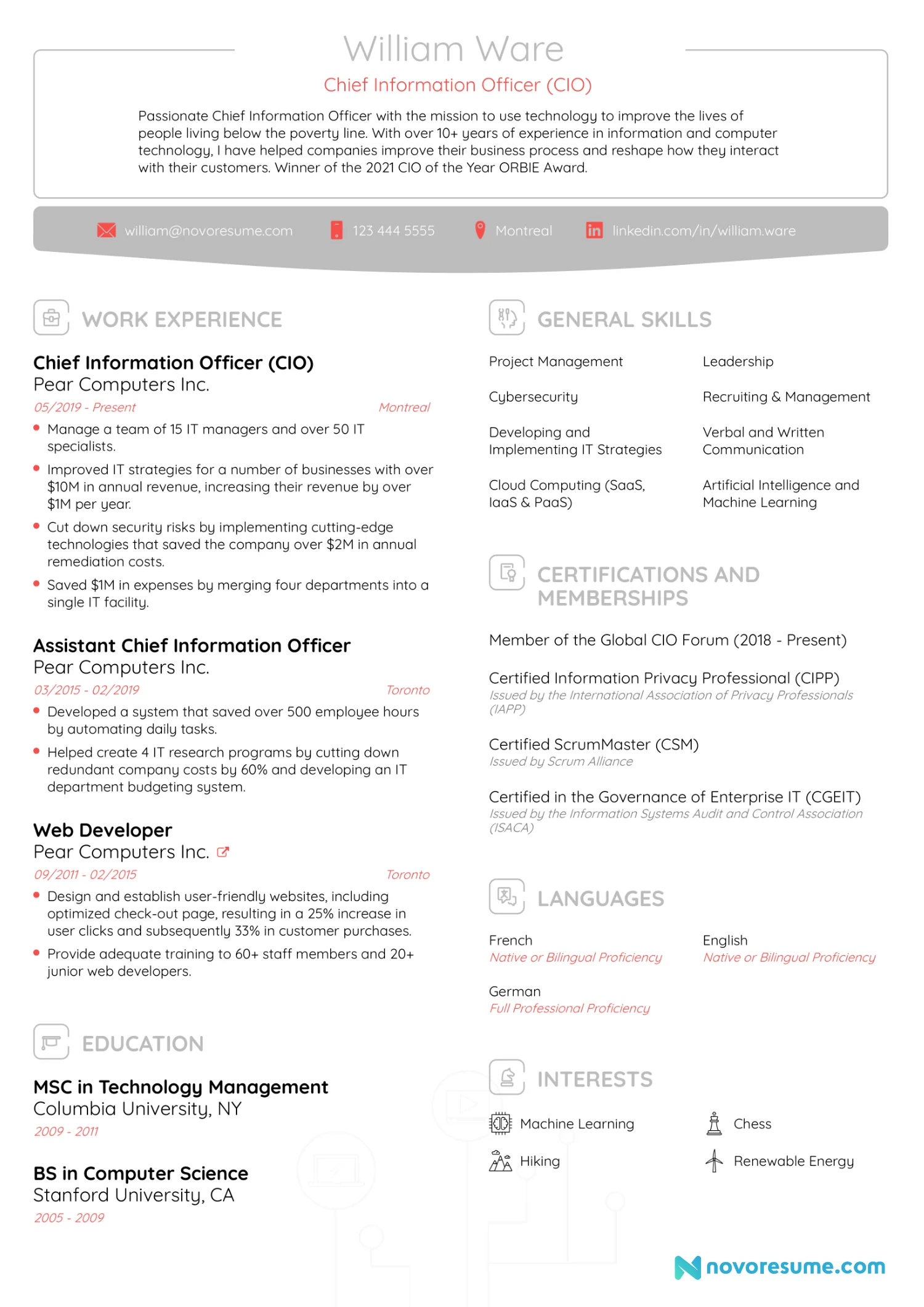How To Write A Canadian-style Resume?
If you’re considering applying for a job in Canada, it’s important to tailor your resume to the Canadian job market. In this article, we will provide you with valuable tips and insights on how to write a Canadian-style resume that will catch the attention of employers and increase your chances of landing your dream job in the Great White North. From formatting to content, we’ve got you covered with all the essential information you need to know.

Heading 1: Understanding the Canadian Job Market
Subheading 1: Researching the Canadian job market
When it comes to finding a job in Canada, it is essential to conduct thorough research on the Canadian job market. This includes understanding the current job trends, in-demand industries, and specific job requirements. Take the time to explore online job boards, company websites, and industry resources to gain a better understanding of the job opportunities available in Canada.
Subheading 2: Familiarizing yourself with Canadian resume standards
Before you start crafting your Canadian-style resume, it is crucial to familiarize yourself with the specific resume standards in Canada. Canadian resumes generally differ from resumes in other countries, so it’s important to understand the expectations of Canadian employers. Familiarizing yourself with the Canadian resume format, content, and structure will help you create a resume that stands out to potential employers.
Subheading 3: Identifying key differences between Canadian and other resumes
One of the most important aspects of writing a Canadian-style resume is identifying the key differences between Canadian resumes and resumes from other countries. Canadian resumes typically focus on relevant work experience, skills, and qualifications. Unlike some other countries, personal details such as date of birth, marital status, or a photo are generally not included in Canadian resumes. Understanding these differences will help you tailor your resume to Canadian employers and increase your chances of success.

Heading 2: Formatting Your Canadian-style Resume
Subheading 1: Choosing the right resume format
When formatting your Canadian-style resume, it is crucial to select the right format that best showcases your skills and qualifications. The most common formats for Canadian resumes are chronological and functional.
- Chronological format: This format emphasizes your work experience in reverse-chronological order, starting with the most recent position. It is suitable if you have a solid work history and want to highlight your career progression.
- Functional format: This format focuses on your skills and qualifications, rather than your work history. It is ideal if you have limited work experience or are changing careers.
Subheading 2: Incorporating personal information and contact details
In your Canadian-style resume, it is essential to include your personal information and contact details. This typically includes your full name, phone number, professional email address, and LinkedIn profile (if applicable). It is important to ensure that your contact details are accurate and up-to-date since employers may need to reach out to you for further consideration.
Subheading 3: Writing a professional summary or objective statement
Including a professional summary or objective statement at the beginning of your resume can help grab the attention of employers. This section should provide a brief overview of your skills, qualifications, and career goals. Tailor this section to match the specific job requirements and demonstrate why you are the ideal candidate for the position.
Subheading 4: Highlighting your relevant skills and qualifications
When writing your Canadian-style resume, it is crucial to highlight your most relevant skills and qualifications. This section should focus on the specific skills and qualifications required for the job you are applying for. Be sure to include hard skills (such as technical expertise) and soft skills (such as communication or teamwork) that are relevant to the position.
Subheading 5: Describing your work experience in reverse-chronological order
In a Canadian-style resume, it is important to describe your work experience in reverse-chronological order, starting with your most recent position. For each job, include the job title, company name, dates of employment, and a brief description of your responsibilities and achievements. Focus on quantifiable achievements and how you added value to the organization.
Subheading 6: Showcasing your educational background
Your educational background is an important component of your Canadian-style resume. Include your highest level of education, including the degree or certification obtained, the institution, and the year of completion. If you have additional relevant certifications or training, be sure to include them in this section.
Subheading 7: Including additional sections for certifications, courses, or relevant achievements
To make your Canadian-style resume more comprehensive, consider including additional sections to showcase certifications, courses, or relevant achievements. This could include industry-specific certifications, professional development courses, or significant achievements that demonstrate your skills and capabilities.
Subheading 8: Utilizing keywords for Applicant Tracking Systems (ATS)
Many employers in Canada use Applicant Tracking Systems (ATS) to screen resumes. To increase the chances of your resume passing through the initial screening process, it is important to utilize keywords that are relevant to the job description. Carefully review the job posting and incorporate key phrases and skills into your resume.
Subheading 9: Tailoring your resume for each job application
To maximize your chances of success in the Canadian job market, it is important to tailor your resume for each job application. Carefully read the job description and requirements and customize your resume to highlight the skills, qualifications, and experiences that are most relevant to the specific role. This will demonstrate to employers that you are a strong fit for the position.
Subheading 10: Proofreading and reviewing for accuracy and clarity
Before submitting your Canadian-style resume, it is crucial to proofread and review it for accuracy and clarity. Ensure that there are no spelling or grammar errors, and double-check that all the information provided is accurate and up-to-date. Consider asking a trusted friend or colleague to review your resume as well, as they may spot any errors or provide valuable feedback.

Heading 3: Writing Compelling Resume Content
Subheading 1: Crafting a captivating professional summary or objective
The professional summary or objective statement at the beginning of your Canadian-style resume is an opportunity to grab the attention of employers. Craft a captivating statement that highlights your key skills, qualifications, and career goals. Tailor this section to match the specific job requirements and demonstrate why you are the perfect candidate for the position.
Subheading 2: Emphasizing your key skills and competencies
In your Canadian-style resume, it is important to emphasize your key skills and competencies. This section should focus on the specific skills required for the job you are applying for. Include both hard skills (such as technical expertise) and soft skills (such as communication or leadership) that are relevant to the position.
Subheading 3: Quantifying your achievements and impact
When describing your work experience and accomplishments, it is important to quantify your achievements and showcase the impact you had in previous roles. Use concrete numbers, percentages, or other metrics to demonstrate the value you brought to the organization. This helps employers understand the extent of your contributions and sets you apart from other applicants.
Subheading 4: Using action verbs and active language
To make your Canadian-style resume more engaging, use action verbs and active language when describing your responsibilities and achievements. This helps create a sense of dynamism and demonstrates your proactivity and initiative. Avoid using passive language and opt for strong verbs that convey your skills and accomplishments.
Subheading 5: Including relevant industry-specific keywords
When writing your Canadian-style resume, it is important to include industry-specific keywords that are relevant to the job you are applying for. These keywords can help your resume stand out to employers and also ensure that your application passes through any screening technology they may use. Customize your resume by incorporating specific terms and phrases used in the job description.
Subheading 6: Showcasing your cultural adaptability and diversity
As Canada is a multicultural country, it is beneficial to showcase your cultural adaptability and diversity on your resume. Highlight any international experience, language skills, or cross-cultural competencies that you possess. This demonstrates your ability to work effectively in diverse environments and can be an asset to Canadian employers.
Subheading 7: Addressing potential language barriers
If English or French is not your first language, it is important to address potential language barriers on your Canadian-style resume. Mention any language proficiency levels you have achieved and if necessary, specify whether you are currently taking language courses to improve your language skills. Employers appreciate transparency and adaptability, so be open about your language abilities.
Subheading 8: Handling employment gaps or other irregularities
If you have any employment gaps or other irregularities on your resume, it is important to address them proactively. Explain any gaps in employment or career changes in a concise and honest manner. Focus on the transferable skills or experiences gained during those periods to reassure employers about your abilities.
Subheading 9: Avoiding unnecessary personal details
Unlike some countries, Canadian-style resumes generally do not include personal details such as date of birth, marital status, or a photo. Avoid including these unnecessary personal details, as they are not relevant to the job application process in Canada. Focus on showcasing your skills, qualifications, and experiences that directly relate to the job requirements.
Subheading 10: Seeking feedback and advice from Canadian professionals
To further enhance the quality of your Canadian-style resume, consider seeking feedback and advice from Canadian professionals in your field. They can provide valuable insights and suggestions on how to tailor your resume to the Canadian job market. Their guidance can help you emphasize the aspects that are important to Canadian employers and increase your chances of success.

Heading 4: Understanding Canadian Resume Etiquette
Subheading 1: Limiting your resume to two pages or less
In Canada, it is generally recommended to limit your resume to two pages or less. Employers have limited time to review each application, so keeping your resume concise and focused is crucial. Avoid unnecessary details and prioritize the most relevant information that demonstrates your skills and qualifications for the position.
Subheading 2: Using appropriate and professional language
When writing your Canadian-style resume, it is important to use appropriate and professional language throughout. Avoid using slang, informal language, or jargon that may not be familiar to Canadian employers. Aim for clarity, simplicity, and professionalism in your writing to make a positive impression.
Subheading 3: Avoiding common resume mistakes and pitfalls
To ensure the effectiveness of your Canadian-style resume, it is essential to avoid common resume mistakes and pitfalls. Double-check for spelling and grammatical errors, use consistent formatting and fonts, and ensure that all the information provided is accurate and up-to-date. Mistakes can create a negative impression and hinder your chances of securing an interview.
Subheading 4: Adhering to Canadian standards of honesty and transparency
Canadian employers value honesty and transparency in the hiring process. Ensure that the information you provide on your resume is accurate and truthful. Avoid exaggerating or misrepresenting your skills, qualifications, or experiences, as this can damage your credibility and professional reputation.
Subheading 5: Understanding privacy laws and protection of personal information
In Canada, there are strict privacy laws governing the collection, use, and protection of personal information. Be aware of these laws and ensure that you do not include any sensitive or unnecessary personal details on your resume. Focus on the information that is directly relevant to your job application.
Subheading 6: Respecting cultural differences and diversity
Canada is known for its cultural diversity, and it is important to respect and promote diversity in your Canadian-style resume. Avoid any discriminatory language or practices and focus on showcasing your adaptability to diverse work environments. Emphasize your open-mindedness, teamwork skills, and ability to collaborate with individuals from various backgrounds.
Subheading 7: Knowing when and how to follow up after submitting your resume
Following up after submitting your resume is a common practice in Canada. If you have not heard back from an employer within a reasonable amount of time, consider sending a polite follow-up email expressing your continued interest in the position. Keep the follow-up concise, professional, and respectful.
Subheading 8: Preparing for potential Canadian-style interview processes
In the Canadian job market, interview processes can vary depending on the company and industry. Research common interview practices in Canada and prepare accordingly. Be ready to showcase your skills, experiences, and cultural adaptability during interviews. Practice common interview questions and be prepared to provide concrete examples of your achievements and problem-solving abilities.
Subheading 9: Keeping your resume up-to-date and relevant
To ensure that your Canadian-style resume remains effective, it is important to keep it up-to-date and relevant. Regularly update your resume with new skills, experiences, or certifications. Tailor your resume to match the specific job requirements for each application, making sure that you highlight the most relevant qualifications and accomplishments.
Subheading 10: Staying informed about evolving Canadian resume trends
The Canadian job market is constantly evolving, and it is important to stay informed about the latest resume trends and expectations. Keep up-to-date with industry-specific requirements and emerging best practices for Canadian-style resumes. This will help you adapt your resume to meet the changing demands of Canadian employers and maximize your chances of success.








